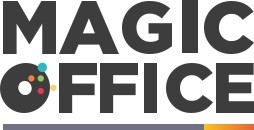
Understanding the Importance of Order Confirmation
Recognizing the Role of Order Confirmation
In the bustling landscape of UK businesses, the order confirmation process stands as a critical juncture between the buyer and seller. This process not only ensures the accuracy of order details but also sets the stage for a smooth fulfillment process. By acknowledging the importance of this step, companies can enhance customer satisfaction and reduce errors in order processing.
Bridging Communication Gaps
Effective order confirmation acts as a bridge, aligning the expectations of both the buyer and seller. It provides a clear acknowledgment of the purchase order, outlining the terms and conditions agreed upon. This clarity helps in mitigating potential disputes and ensures that both parties are on the same page regarding delivery timelines and goods specifications.
Ensuring Accuracy and Efficiency
Accuracy in order confirmation is paramount. A well-structured confirmation includes all necessary details such as sales order numbers, invoice references, and delivery schedules. By utilizing templates and automated systems, companies can streamline the acknowledgment process, reducing manual errors and speeding up order processing.
Building Trust with Customers
For UK companies, a reliable order confirmation process fosters trust with customers. When buyers receive timely and accurate order acknowledgments, it reinforces their confidence in the seller's ability to deliver on promises. This trust is crucial for building long-term business relationships and can significantly impact repeat sales.
For more insights on enhancing efficiency in business processes, you can explore this resource.
Key Components of an Effective Order Confirmation
Vital Elements for an Efficient Order Confirmation
Establishing a robust order confirmation system is crucial in UK companies to ensure seamless commerce transactions between the buyer and seller. Here’s what comprises an effective order confirmation:- Details of the Purchase Order: At the core of an order confirmation is the inclusion of comprehensive order details. This involves ensuring that every filed purchase order clearly states the goods or services being bought, complete order amounts, and specifics such as delivery schedules.
- Clear Acknowledgment Process: A streamlined acknowledgment process is essential to foster transparent communication. By promptly acknowledging orders, companies can establish trust and reliability with customers. This process can be standardized through templates, enhancing efficiency and consistency.
- Terms and Conditions: Highlighting terms and conditions explicitly in the order confirmation lays a solid foundation for any sales transaction. These terms should cover payment details, delivery expectations, and any other stipulations pertinent to fulfilling the order.
- EDI for Automation: Implementing Electronic Data Interchange (EDI) can simplify processing sales orders, receipts, and invoices. EDI minimizes human error and enhances the speed of the acknowledgment process, making it an indispensable tool for improving order confirmations.
- Printed and Digital Confirmation Templates: Availability of both printed and digital confirmation templates caters to the varied preferences of customers. Whether it's through a print report or an electronic acknowledgment, having these choices ensures customer satisfaction.
Challenges Faced by UK Companies in Order Confirmation
Overcoming Challenges in the Order Acknowledgment Process
Navigating the intricacies of order acknowledgment can often present significant challenges for UK companies. The pursuit of customer satisfaction is fundamental, yet the path is riddled with potential obstacles. One of the key hurdles is the integration of order processing systems with diverse buyer-seller platforms. Ensuring compatibility of EDI purchase systems with various customer orders can lead to inconsistencies in order details and fulfillment processes. The risk of mismatched sales order information or missing terms conditions within delivery and goods processing heightens the potential for disputes. Moreover, clarity in communication is paramount but frequently hindered. Ambiguities in order confirmation templates or printed reports can lead to confusion and delays. The crux of the problem lies in the fine print—terms and conditions must be unequivocally clear from the outset to prevent disagreements between buyer and seller. Additionally, maintaining legacy systems can be a barrier to efficiency. Older systems often lack the flexibility to adapt to the evolving dynamics of sales orders, making it arduous to update order acknowledgments with precision. Upgrading or transitioning these systems necessitates significant resources and can disrupt the order processing workflow. The acknowledgment order process also suffers when there is a lack of automation. Manual processing is prone to errors and slows down the sales cycle, impinging on overall customer satisfaction. Yet, while automation promises a streamlined approach, implementing it across all aspects of the order processing system demands foresight and investment. In addressing these challenges, it becomes evident that strategic adaptation is critical. Consider exploring insights on streamlining the purchase order process in UK companies to optimize your order acknowledgment strategies. Here, you'll find valuable guidance on tailoring processes to meet modern demands efficiently.Strategies for Streamlining Order Confirmation
Strategies to Refine Confirmation Protocols
In an effort to boost customer satisfaction and efficiency, UK companies can adopt several strategies to refine their order confirmation processes. Ensuring that each step from purchase to delivery runs smoothly requires a clear strategy for communication between the buyer and seller, and an accurate acknowledgment of sales orders.
One effective method is establishing clear terms and conditions at the outset. The terms should be clearly communicated in the order acknowledgment to prevent any misunderstandings in the fulfillment process. Companies can make use of templates that outline crucial details, including order confirmation, delivery dates, and purchase order specifics.
Another significant strategy involves the use of Electronic Data Interchange (EDI) systems. EDI technology can streamline the order processing tasks by automating the exchange of order acknowledgements, purchase orders, and invoices, which in turn reduces human errors and accelerates the confirmation timeline.
To complement these strategies, companies can enhance their acknowledgment process by training their staff on the proper methods of communicating order details. Regularly reviewing and refining the process ensures that employees are up-to-date with the latest order processing techniques.
Additionally, integrating the confirmation of printed sales orders into the workflow allows businesses to have a physical report of the acknowledgment order. This acts as an additional verification step, further aiding in precise processing and reducing disputes with customers.
Finally, ongoing feedback collection from customers on the acknowledgment and processing of their orders will highlight areas for improvement and help maintain a high level of service quality. This strategy ensures continuous improvement in the order confirmation process, fostering trust and loyalty among clients.
Leveraging Technology for Improved Order Confirmation
Integrating Technology to Boost Order Confirmation Processes
Integrating modern technology into the order confirmation process can significantly improve efficiency, accuracy, and customer satisfaction for UK companies. By leveraging advanced tools, businesses can overcome various challenges, enhance their operations, and provide a superior experience to both buyers and sellers. One popular method is the implementation of Electronic Data Interchange (EDI). This technology facilitates the seamless exchange of purchase orders, sales orders, order acknowledgment, and other vital documents between the buyer and the seller. Utilizing EDI can streamline order processing, reduce errors, and enable quick acknowledgment, thus improving communication across the entire sales order cycle. Additionally, automating the order fulfillment process with sophisticated software can ensure that order acknowledgments are prompt and tailored. Companies can create templates for acknowledgment order emails that automatically pull in order details and terms conditions, reducing the risk of human error and speeding up the flow of information. Investing in Customer Relationship Management (CRM) systems can also enhance the acknowledgment process by tracking customer interactions and preferences. This approach not only aids in efficient order confirmation but also enriches the customer experience and builds trust with the consumer. Furthermore, integrating digital platforms for printed and electronic invoices can help standardize the confirmation process. Access to real-time data across departments allows businesses to swiftly address issues related to order miscommunication, thus improving overall order processing and ensuring on-time delivery. By leveraging these technologies, UK companies can align their order confirmation processes with industry best practices, elevating customer satisfaction and gaining a competitive edge in the market.Case Studies: Successful Order Confirmation in UK Companies
Real-World Examples of Order Confirmation Success
In the realm of UK companies, effective order confirmation processes can significantly enhance customer satisfaction and streamline operations. Here are some examples of companies that have successfully optimized their order confirmation processes:
Company A: Leveraging EDI for Seamless Order Processing
Company A, a leading retailer, implemented Electronic Data Interchange (EDI) to automate their order processing. By integrating EDI, they reduced manual errors and improved the speed of order acknowledgments. This technology allowed them to send order confirmations to buyers almost instantly, ensuring that the order details were accurate and aligned with the sales order terms. The use of EDI also facilitated better communication between the buyer and seller, enhancing the overall fulfillment process.
Company B: Customizing Order Confirmation Templates
Company B, a mid-sized manufacturer, focused on customizing their order confirmation templates to include comprehensive order details. By doing so, they provided clear and concise information to customers, reducing the need for follow-up inquiries. Their templates included all necessary information such as purchase order numbers, delivery dates, and terms and conditions. This attention to detail in the acknowledgment process helped in building trust and improving customer satisfaction.
Company C: Streamlining Through Centralized Order Processing
Company C, a logistics firm, centralized their order processing system to enhance efficiency. By consolidating their order acknowledgment and processing functions, they minimized delays and ensured that printed reports and invoices were accurate. This centralization allowed for a more coordinated approach to handling sales orders, leading to quicker confirmations and smoother delivery of goods.
These case studies illustrate how UK companies are successfully addressing the challenges in order confirmation by adopting strategic approaches and leveraging technology. By focusing on the key components of effective order confirmation, businesses can not only improve their internal processes but also enhance their relationships with customers.













